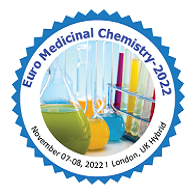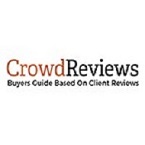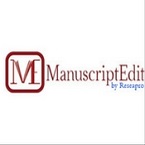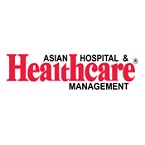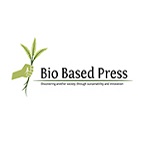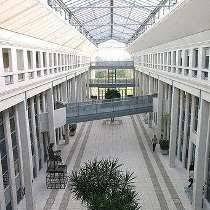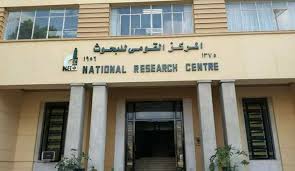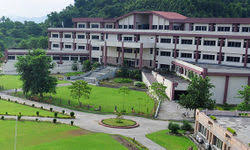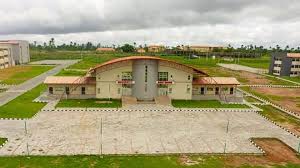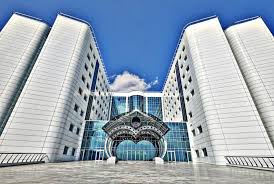Renowned Speakers

Magnus S. Magnusson
Human Behavior Laboratory, University of Iceland Ireland
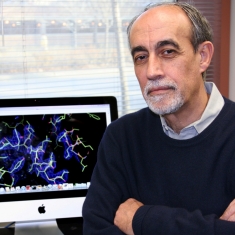
Celerino Abad-Zapatero
University of Illinois at Chicago USA USA
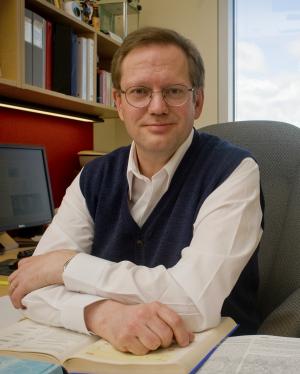
Fred Stevens
Professor at Oregon State University USA

Peter Kalinka
Chairman at Longmore 60 Biotech Inc. USA USA

Satinder Ahuja
Ahuja Consulting USA USA
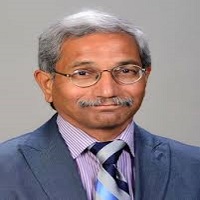
Yashwant Pathak
Associate Dean University of South Florida Health USA USA

Fiona M Greer
Director SGS Life Sciences Switzerland
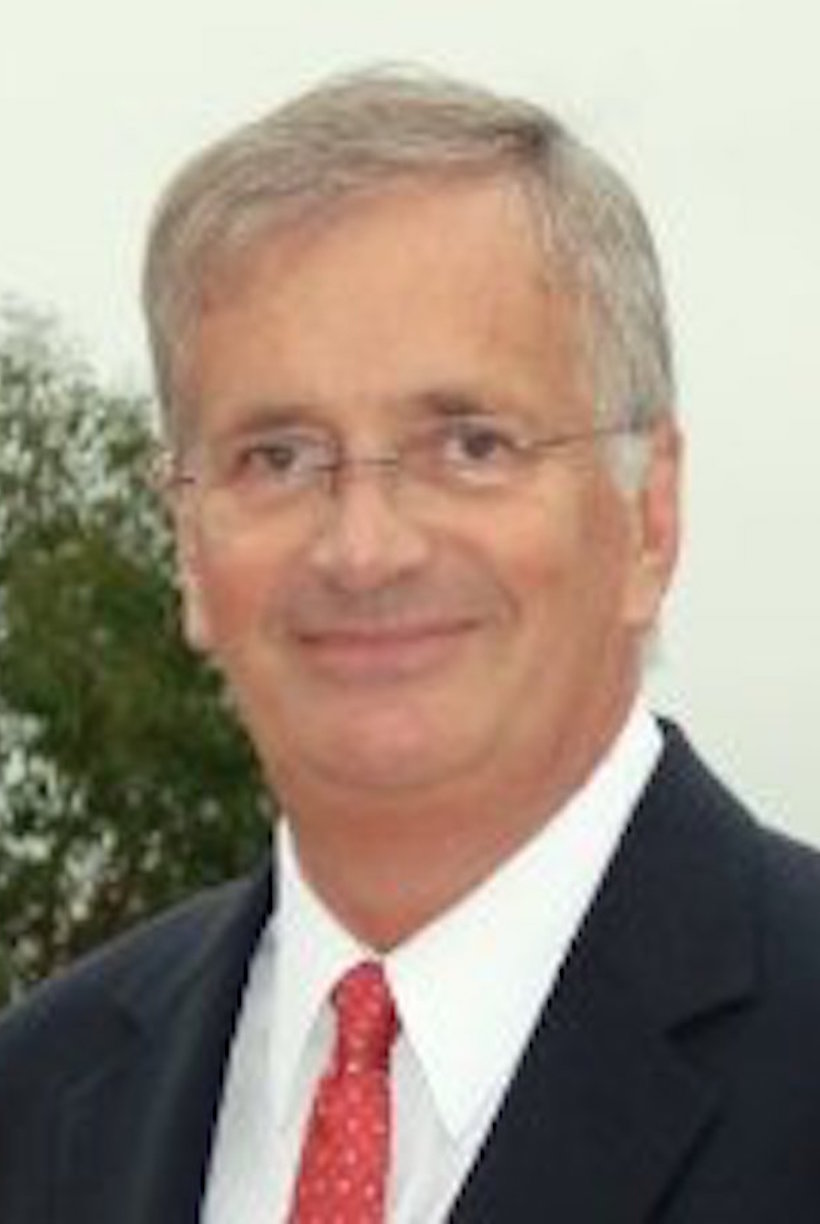
Francois-Xavier Frapaise
F.-X. Frapaise Consulting, France France
Recommended Global Pharmaceutical Sciences Webinars & Conferences
Europe & UK
Asia Pacific & Middle East
Canada
Euro Medicinal Chemistry 2022
ABOUT CONFERENCE
Chemistry Conferences welcome chemical professionals, researchers, professors, scientific communities, delegates, students, business professionals and executives from all over the world to attend the “13th International Conference on Medicinal Chemistry and Drug Discovery” which is to be held during November 07-08, 2022 London, UK. which includes prompt Keynote presentations, Oral talks, Poster presentations and Exhibitions.
EURO MEDICINAL CHEMISTRY 2022 which is the primordial chemistry conferences serves as a global platform to discuss and learn about Medicinal Chemistry, Pharmaceutical Sciences, Drug Design and Drug Development, CADD (Computer Aided Drug Design), Bioorganic and Medicinal Chemistry, Pharmacology and toxicology, Anticancer agents in Medicinal Chemistry, Analytical Chemistry, Pharmaceutical Industry, Organic Chemistry, Clinical Pharmacology, Evolution of Organic and Medicinal Chemistry in Pharma, Organic and Medicinal Chemistry Technologies for Drug Discovery, QSAR (Quantitative Structure-Activity Relationship) Fragment-Based Drug Design, Applications of Organic and Medicinal Chemistry in Drug Discovery, Market Dynamics, Conclusions and Future Trends, Medicinal Plants
In the light of this theme, the conference series aims to provide a forum for international researchers from various areas of chemistry, pharmacy, Medicinal Chemistry and Drug Design by providing a platform for critical analysis of new designing, and to share latest cutting-edge research findings and results about all aspects of Medicinal Chemistry. The current meeting of chemistry conferences will be a multinational gathering and present major areas such as Medicinal Chemistry, Pharmaceutical Sciences, Drug Design and Drug Development, Organic Chemistry and overall applications.
Target Audience:
- Professors in Pharmaceutical sciences and Chemistry
- Associate and Assistant Professors in Pharmaceutical sciences and Chemistry
- Post-doctoral and Researchers in Pharmaceutical sciences and Chemistry
- Heads of Pharmaceutical sciences and Chemistry Departments
- Post Graduates and Graduates in Pharmaceutical sciences and Chemistry
- Laboratory Chemists
- Chemical Scientists working on Medicinal Chemistry
- Experts in the development of Medicinal Chemistry
- The field of Medicinal Chemistry and Chemistry involves wide range of sectors of markets growing respectively.
ConferenceSeries organizes 1000+ Global events every year across the globe with support from 1000+ more scientific societies and Publishes 700 Open access journals which contains over 50000 eminent personalities, reputed scientists as editorial board members.
Young Scientist Benefits
- Our conferences provide best Platform for your research through oral presentations.
- Share the ideas with both eminent researchers and mentors.
- Young Scientist Award reorganization certificate and memento to the winners
- Young Scientists will get appropriate and timely information by this Forum.
- Platform for collaboration among young researchers for better development
- Award should motivate participants to strive to realize their full potential which could in turn be beneficial to the field as whole.
SESSIONS AND TRACKS
Track 01: Applied Medicinal Chemistry
Applied Medicinal Chemistry in its most common practice focusing on small organic molecules. Applied Medicinal Chemistry encompasses synthetic organic chemistry and aspects of natural products and computational chemistry in close combination with chemical biology, enzymology and structural biology, together aiming at the discovery and development of new therapeutic agents
Track 02: Medicinal Chemistry for Drug Discovery
Medicinal Chemistry for Drug Discovery: Significance of Recent Trends reviews the state of the art and aims to determine the significance of technology and market trends in medicinal chemistry for advancing productivity in drug discovery. Although the fundamental task of medicinal chemists has not changed drastically over time, the chemical and computational tools and perspectives at their disposal have advanced significantly. One in particular, fragment-based drug design, stands out as promising major improvements in research productivity. We examine medicinal chemistry-related approaches and methodologies that drug discovery organizations employ in an effort to increase productivity in early drug discovery and decrease attrition at later pipeline stages. Key topics considered include structure-based drug design, fragment-based drug design, natural products-based drug design, diversity-oriented synthesis, and chemogenomics. An overall assessment of the current and potential value of these approaches is presented. Various flavors of computer-aided drug design are also considered, as the complexity and limitations of drug discovery programs that are based on biochemical screens of large compound collections have been major factors in stimulating the growth of this modality.
Track 03: Anti-Infective Agents in Medicinal Chemistry
Anti-Infective Agents in Medicinal Chemistry aims to cover all the latest and outstanding developments in medicinal chemistry and rational drug design for the discovery of new anti-infective agents. Each issue contains a series of timely in-depth reviews written by leaders in the field covering a range of current topics in anti-infective medicinal chemistry. Anti-Infective Agents in Medicinal Chemistry is an essential journal for every medicinal chemist who wishes to be kept informed and up-to-date with the latest and most important developments in anti-infective drug discovery.
Track 04: Fusion of Traditional and Biomedicine
Perhaps nothing epitomizes the fusion of traditional and biomedicine more than predictive, preventive and personalized and participatory medicine. The truth is that modern medicine is desperately short of new treatments. It takes years for a new drug to get through the research and development pipeline to manufacture and the cost is enormous. Estimates suggest up to 80 per cent of the population has tried a therapy such as acupuncture or homeopathy. And a survey conducted earlier this year found that 74 per cent of us medical students believe that western medicine would benefit by integrating traditional or alternative therapies and practices. Example –artemisinin, which is extracted from Artemisia annual or Chinese sweet wormwood, is the basis for the most effective malaria drugs the world has ever seen. But making traditional medicine truly mainstream — incorporating its knowledge into modern healthcare and ensuring it meets modern safety and efficacy standards — is no easy task and is far from complete.
Track 05: Plant Genomics
Plant research and its technologies have improved dramatically over the last 5 years as a result of the revolutionary breakthroughs including new gene editing technologies and reduction in the cost of sequencing. Many plants have now been successfully sequenced and a wide range of biological data sets made available. As a result, plant scientists are now more than ever making use of state of the art technology platforms to help explain biological principals, advance research and therefore enable benefits such as crop improvement / breeding etc. The goals of agricultural plant science are to increase crop productivity, increase the quality of agricultural products, and maintain the environment. The success of transgenic crops has erased the last vestiges of doubt about the value of agricultural biotechnology and triggered large-scale investments in plant genomics. Genetic maps are also an important resource for plant gene isolation, as once the genetic position of any mutation. Since the invention of plant cell and tissue culture techniques more than half a century ago, scientists have been trying to understand the morphological, physiological, biochemical and molecular changes associated with tissue culture responses. Establishment of de novo developmental cell fate in vitro is governed by factors such as genetic make-up, stress and plant growth regulators.
Track 06: Antibiotics
Antibiotics are powerful medicines that fight bacterial infections. Most antibiotics fall into their individual antibiotic classes. An antibiotic class is a grouping of different drugs that have similar chemical and pharmacologic properties. Penicillin’s, tetracycline, cephalosporin, quinolones, lincomycins, macrolides, sulphonamides, aminoglycosides, carbapenems are few classes of antibiotics. Some antibiotics work by killing germs (bacteria or the parasite). This is often done by interfering with the structure of the cell wall of the bacterium or parasite. Some work by stopping bacteria or the parasite from multiplying. Most side-effects of antibiotics are not serious. Common side-effects include soft stools (faeces), diarrhoea, or mild stomach upset such as feeling sick (nausea). The overuse of antibiotics in recent years means they're becoming less effective and has led to the emergence of "superbugs". These are strains of bacteria that have developed resistance to many different types of antibiotics
Track 07: Chem-Corona (Corona-Virus)
Coronaviruses are types of viruses that typically affect the respiratory tracts of birds and mammals, including humans. Doctors associate them with the common cold, bronchitis, pneumonia, and severe acute respiratory syndrome (SARS), and they can also affect the gut. Coronaviruses (CoV) are a large family of viruses that cause illness ranging from the common cold to more severe diseases such as Middle East Respiratory Syndrome (MERS-CoV) and Severe Acute Respiratory Syndrome (SARS-CoV). A novel coronavirus (nCoV) is a new strain that has not been previously identified in humans. Coronaviruses are zoonotic, meaning they are transmitted between animals and people. Detailed investigations found that SARS-CoV was transmitted from civet cats to humans and MERS-CoV from dromedary camels to humans. Several known coronaviruses are circulating in animals that have not yet infected humans. Common signs of infection include respiratory symptoms, fever, and cough, shortness of breath and breathing difficulties. In more severe cases, infection can cause pneumonia, severe acute respiratory syndrome, kidney failure and even death. Standard recommendations to prevent infection spread include regular hand washing, covering mouth and nose when coughing and sneezing, thoroughly cooking meat and eggs. Avoid close contact with anyone showing symptoms of respiratory illness such as coughing and sneezing.
Track 08: Drug Chemistry
Infectious disease and antimicrobial agent use imply deep knowledge and expertise in this field by medical team and clinical pharmaceutical care principle can complete the clinician’s works in more rational way preserving the activity of some critical drugs from MDR diffusion. We think that using the methods of the researcher in 1800-1900 in their laboratory without a lot of burocratic rules we can obtain more relevant pharmacological molecules to introduce in therapy today. We can think also that a more rapid process in improving some chemical characteristics of some drugs is today requested and this can be reached also by single research level. This work must be favoured by registrative institution in an acceptable toxicity risk level in order to have more chances in drug discovering and re-designing.
Track 09: Pharmaceuticals & Nutraceuticals
The term “nutraceutical” is used to describe these medicinally or nutritionally functional foods. Nutraceuticals, which have also been called medical foods, designer foods, phytochemicals, functional foods and nutritional supplements, include such everyday products as “bio” yogurts and fortified breakfast cereals, as well as vitamins, herbal remedies and even genetically modified foods and supplements. Both can have a similar effect on the body but the long term affect is devastatingly different. The idea is that, “we can produce the same type of effect as drugs without all of the side effects”. Nutraceuticals, in contrast to pharmaceuticals, are substances, which usually have not patent protection. The straightforward application of pharmaceutical standards, especially across national borders, is likely to be a difficult challenge and could effectively paralyze the industry. We are all advocates for all natural nutrition, but due to the legal claim that only drugs can cure, prevent or mitigate. Nutraceuticals cannot be recommended by doctors when someone is suffering from illness.
Track 10: Novel Target Drugs to The Treatment of Cancer
Directed disease treatments are drugs or other therapeutic substances which hinders the development and spread of tumour by hindering with the particles called sub-atomic targets which are associated with the development, movement and spread of malignancy. In this manner, advancement of novel-tumour ligand or pharmaceutical Nano bearers is very alluring. Hostile to disease drugs are likewise called Anti neoplastic-operators or Chemotherapeutic-specialists.
Track 11: Vaccines and Autism
A worldwide increase in the rate of autism diagnoses—likely driven by broadened diagnostic criteria and increased awareness—has fuelled concerns that an environmental exposure like vaccines might cause autism. Substantial data demonstrate immune abnormality in many autistic children consistent with impaired resistance to infection, activation of inflammatory response, and autoimmunity. T lymphocytes (t cells) are abnormal in many autistic children. Cytokines from t cells regulate the full spectrum of antibody and cell-mediated response, the latter being particularly important in resistance to viral infections. In autism, there is clear-cut evidence of activation of the immune response system, which may be due to innate, toxic, or infectious influences - or some combination of these factors. Changes in certain genes increase the risk that a child will develop autism. If a parent carries one or more of these gene changes, they may get passed to a child (even if the parent does not have autism). Certain environmental influences may further increase – or reduce – autism risk in people who are genetically predisposed to the disorder.
Track 12: Biologic Drugs in Autoimmune Diseases
Huge progression has been made in the treatment of immune system sicknesses by presenting novel, for the most part biologic, sedates instead of substance particles. Biologic agents are biologically emerged and used therapeutically. Most of these agents are based on receptor proteins or antibodies. Biologic therapies help in the treatment of lupus erythematous, rheumatoid arthritis, multiple sclerosis, Grave's disease, and inflammatory bowel disease.
Track 13: Frontiers in Chemistry
Chemistry is a stimulating field as it links many scientific disciplines and allows for collaboration with other scientists in researching and developing new drugs. Chemists apply their chemistry training to the process of synthesizing new pharmaceuticals. They also improve the processes by which existing pharmaceuticals are made. Medicinal chemists are focused on drug discovery and development and are concerned with the isolation of medicinal agents found in plants, as well as the creation of new synthetic drug compounds. Most chemists work with a team of scientists from different disciplines, including biologists, toxicologists, pharmacologists, theoretical chemists, microbiologists, and biopharmacists. Together, this team uses sophisticated analytical techniques to synthesize and test new drug products and to develop the most cost-effective and environmentally friendly means of production. Human exposure to contemporary materials and products has increased dramatically in modern times. We are constantly confronted with manufactured materials, both at work and during leisure pursuits, indoors as well as outdoors, whilst undertaking sports activities, or in social or educational environments. It is urgent to develop new therapeutic methods, with higher efficiency and lower side effects. Antimicrobial peptides (AMPs) are found in the innate immune system of a wide range of organisms. Identified as the most promising alternative to conventional molecules used nowadays against infections, some of them have been shown to have dual activity, both as antimicrobial and anticancer peptides (ACPs). Cereals such as wheat, rice, barley, rye, and maize have been recently identified as new sources of bioactive peptides. High quality cereal proteins are an important source of bioactive peptides, which consist of distinctive amino acid sequences, and which, once they are released, could display diverse functionalities.
Track 14: Targeted Drug Delivery System-TDDS (Smart Drug Delivery)
Targeted drug delivery, sometimes called smart drug delivery,is a method of delivering medication to a patient in a manner that increases the concentration of the medication in some parts of the body relative to others. It is a special form of drug delivery system where the medicament is selectively targeted or delivered only to its site of action or absorption and not to the non-target organs or tissues or cells.
.
MARKET ANALYSIS
Global Market Value of Medicinal Chemistry:
Global Medicinal Chemistry for Drug Discovery Market report is a comprehensive study on how the current state is for market. This report provides a thorough synopsis for the Medicinal Chemistry for Drug Discovery industry. It includes detailed market definition, classifications, applications and for most important the industry chain structure along with market trends and uses SWOT analysis. The report gives a deep knowledge about Medicinal Chemistry for Drug Discovery Market and shows the important product developments and tracks recent acquisitions, merges and research in the industry. This report provides the forecast for the years 2019 to 2026.
The global Medicinal Chemistry is segmented on the basis of type, drug type and therapeutic area. Based on type, the market is segmented as biology services, medicinal chemistry and drug metabolism and pharmacokinetics. On the basis of the drug type the segment is classified as biologics and small molecules. Similarly, on the basis of therapeutic area the segment is divided into cardiovascular diseases, oncology, neurology, diabetes, respiratory diseases and others.
Chemistry volumes continue to rise in the U.S. and chemical market expected to contract this year—As a result, chemical industry capital spending in the U.S. surged 12.1% in 2014 and gained 21.0% in 2015, reaching $43.58 billion and accounting for more than one-half of total construction spending by the manufacturing sector. The association representing US-based chemical producers said that US chemical production (excluding pharmaceuticals) is expected to realize the overall growth of 1.6% in 2016, followed by 4.1% growth next year, and 5.0% in 2018. Average annual gains of over 8% per year in U.S.
Chemical industry capital spending are expected through 2018 with only a minor slowdown in subsequent growth expected. By 2021, ACC expects capital spending to reach $70 billion, contributing to four consecutive years of job growth in the industry. American chemistry revenues will exceed $1.0 trillion by 2020.
Chemistry Council stated that more than 275 new chemical production projects had been announced since 2010 with a total value of more than $170 billion, with a full 49% already complete or under construction; 61% of these are the foreign direct investment. By 2021, U.S. capital spending by the chemical industry will reach $65 billion—more than triple the level of spending at the start of this prolonged cycle in 2010. The trade surplus in chemicals (excluding pharmaceuticals) will grow to $36 billion this year as exports rise by 2% to $132 billion and imports hold steady at $96 billion. Two-way trade between the U.S. and its foreign partners will reach $227 billion this year and will grow steadily over the coming years.
Medicinal Chemistry Market:
Medicinal Chemistry Systems Market Report provides a relevant source of perceptive data for investors. Medicinal Chemistry Market Report also examines global Medicinal Chemistry Systems Industry growth analysis, the past and innovative cost, demand and supply information, and revenue.
Chemical companies from the United States are among the industry’s leading global players. With revenue of 48.2 billion U.S. dollars in 2016, Dow Chemical is the largest U.S. chemical company, and the world’s third largest behind German chemical companies BASF and Bayer. Other U.S. top companies are Lyondell Basell, DuPont and Praxair. In 2016, several of the leading global chemical companies announced mergers, effectively changing the dynamics of the global chemical industry.
The U.S. is the world’s largest exporter of chemical goods. In 2016, chemical exports were worth some 185 billion U.S. dollars. Most of it was generated through exports to the Asia-Pacific region. The leading countries of destination for chemical exports from the U.S. were Canada, Mexico, and China. However, the U.S. also has a large demand for chemical imports. In 2016, these imports were worth around 206 billion U.S. dollars.
The U.S. chemical industry spends relevant amounts for research and development. In 2016, almost 91 billion U.S. dollars were spent for R&D purposes in the chemical industry. That means that R&D funds have almost doubled over the last decade. Accordingly, the United States is the global leader in developing new chemical and pharmaceutical entities.
Scope & Importance:
Medicinal chemistry market has evolved rapidly into a highly interdisciplinary field, enriched by the collaborative efforts of experts from a wide spectrum of specialist areas, from chemoinformaticians and physical chemists to molecular biologists and pharmacologists. Future Medicinal Chemistry provides a regular point of access to commentary and debate for this ever-expanding and diversifying community. The journal showcases milestones in pharmaceutical R&D and features expert analysis of emerging research-from the identification of targets, through to the discovery, design, synthesis and evaluation of bioactive agents. Where relevant, contributions are also actively encouraged on areas as diverse as biotechnology, enzymology, green chemistry, genomics, immunology, materials science, neglected diseases and orphan drugs, pharmacogenomics, proteomics and toxicology.
• The global anti-infective agents market size was valued at USD 111.1 billion in 2018 and is anticipated to expand at a CAGR of 3.4% during the forecast period. Extensive R&D efforts pertaining to the development of new drugs with high efficacy and potency against multi-drug resistant micro-organisms is one of the major factors stimulating the growth?
• Global synthetic biology market was valued at $4,291 million in 2014, and expected to reach $14, 743 million by 2020, registering a CAGR of 23.0% during the forecast period 2015 - 2020. Synthetic biology is a novel area of research that is the amalgamation of multiple disciplines such as molecular biology, biotechnology, biophysics and genetic engineering among others.
• The global synthetic biology market is forecast to reach $38.7 billion by 2020, at a CAGR of 44.2% during the forecast period (2014 - 2020). Europe occupies largest share in the global market and would hold-on to its position throughout 2020. However, Asia Pacific is the fastest growing market with a CAGR of 46.4% from 2014 - 2020.
• Synthetic Biology Market is expected to reach $38.7 Billion, Globally, by 2020
Excipients in Medicinal Chemistry
• The global excipients market is expected to grow from USD 6.17 Billion in 2017 to USD 9.78 Billion by 2025, at a CAGR of 5.93% during the forecast period from 2018-2025
• The global chemistry excipients market is projected to reach USD 9.7 billion by 2025 from USD 6.9 billion in 2019, at a CAGR of 5.8%.
• The global chemistry is expected to reach USD 9.04 Billion by 2024 from USD 5.71 Billion in 2016 at CAGR of 5.92% (Detailed analysis of the market CAGR is provided in the report).
• Global Ophthalmic Drugs Market size was valued at $29,613 million in 2016, and is expected to reach $42,663 million by 2023, registering a CAGR of 5.3% from 2017 to 2023. Ophthalmic drugs are extensively used to treat glaucoma, cataract, diabetic retinopathy, and other ophthalmic disorders. Introduction of novel ocular drug delivery approaches in the market has driven the manufacturers to develop innovative therapeutic approaches for the treatment of ophthalmic disorders. According to the American Academy of Ophthalmology, 11 million people in the U.S. suffer from age-related macular degeneration (AMD), while approximately 10% of them are inflicted with wet AMD. Such trends in ophthalmic disorders across the globe contribute to the growth of the market.
Target Audience:
- Professors in Pharmaceutical sciences and Chemistry
- Associate and Assistant Professors in Pharmaceutical sciences and Chemistry
- Post-doctoral and Researchers in Pharmaceutical sciences and Chemistry
- Heads of Pharmaceutical sciences and Chemistry Departments
- Post Graduates and Graduates in Pharmaceutical sciences and Chemistry
- Laboratory Chemists
- Chemical Scientists working on Medicinal Chemistry
- Experts in the development of Medicinal Chemistry
Related Companies/Industries:
|
Abbott Laboratories |
Amedis Pharmaceuticals |
Barnstead International |
Becton, Dickinson and Company |
|
Chemistry-software.com |
DMV International Pharma |
Exchem Mining & Construction |
Johnson Matthey |
|
Key Organics Limited |
May bridge Chemicals |
National Physical Laboratory (NPL) |
Oxford Analytical Ltd |
|
Senn Chemicals |
Target Molecules |
United Kingdom Atomic Energy Authority (UKAEA) |
Vertex Pharmaceuticals Inc. |
|
Zinsser Analytic |
WRc-NSF Ltd |
Strem Chemicals |
RSSL Pharma |
|
Pharmacia Corporation |
Personal Chemistry |
Novabiochem |
MDS Pharma Services |
|
Forensic Science Service (FSS) |
Current Science Group (CSG) |
Pfizer |
Zoetis |
Association & Societies:
- European Federation of Catalysis Societies
- European Federation of Chemical Engineering
- European Precious Metals Federation
- Federation of Asian Chemical Societies
- International Association for the Properties of Water and Steam
- International Association of Chemical Thermodynamics
- International Association of Environmental Analytical Chemistry
- International Association of Nanotechnology
- International Confederation for Thermal Analysis and Calorimetry
- International Ultraviolet Association
- International Union of Crystallography
- Synthetic Organic Chemical Manufacturers Association
- Indian Institute of Integrative Medicine
- Medicinal Chemistry & Pharmacology - CSIR-Indian Institute
- Division of Medicinal Chemistry – Research Centre for Medicinal Chemistry
- Medical research institutes in the United Kingdom
- The Canadian Society for Chemistry
- Organic division
- Hellenic Society of Medicinal Chemistry
- Hungarian Chemical Society
PAST CONFERENCE REPORT
EURO MEDICINAL CHEMISTRY 2022
13th International Conference on Medicinal Chemistry and Drug Discovery
November 07-08, 2022 London, UK
Active participation and generous response were received from the Organizing Committee Members, scientists, researchers, as well as experts from Non-government organizations, and students from diverse groups who made this conference as one of the most successful and productive events in 2021 from Conference series.
The conference was marked with several workshops, multiple sessions, Keynote presentations, panel discussions and Poster sessions. We received active participation from scientists, young and brilliant researchers, business delegates and talented student communities representing more than 35 countries, who have driven this event into the path of success.
The conference was initiated with a warm welcome note by Honourable guests and the Keynote forum. The conference proceedings were carried out through various Scientific-sessions and plenary lectures, of which the following Speakers were highlighted as Keynote speakers: Luisa Cianni Portugal Antonio, Anais JOLIT, Chinedu Imo, mohammed abuhajjaj.
We are obliged to the various delegates from companies and institutes who actively took part in the discussions. We sincerely thank the Organizing Committee Members and Editorial board of Medicinal Chemistry 2021 for their gracious presence and continuous support throughout the proceedings of this event. With the valuable feedback and generous response received from the participants of the event, Conference Series would like to announce the commencement of 13th International Conference on Medicinal Chemistry and Drug Discovery November 07-08, 2022 London, UK
To Collaborate Scientific Professionals around the World
Conference Date November 07-08, 2022
For Sponsors & Exhibitors
Speaker Opportunity
Useful Links
Past Conference Report
Supported By
All accepted abstracts will be published in respective Conference Series International Journals.
Abstracts will be provided with Digital Object Identifier by
